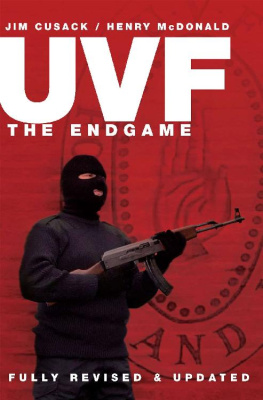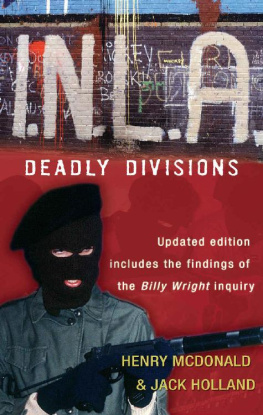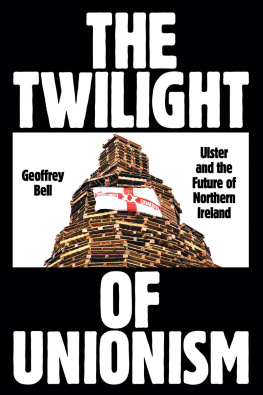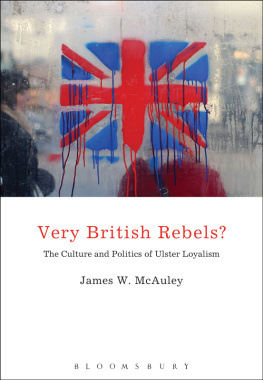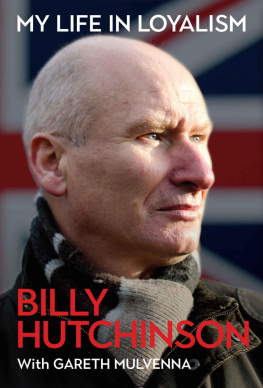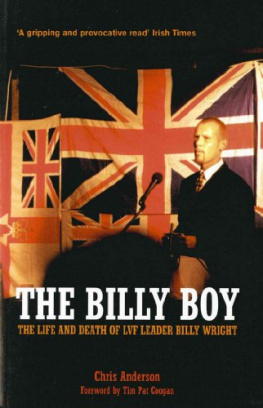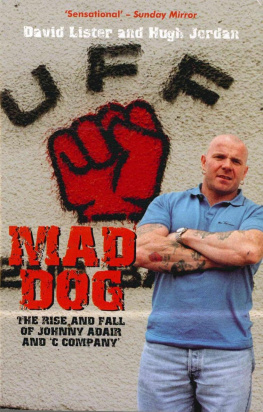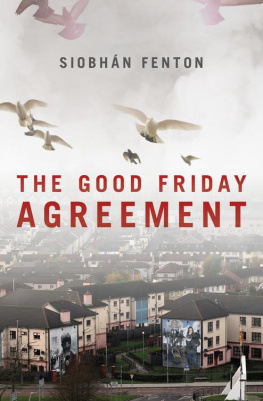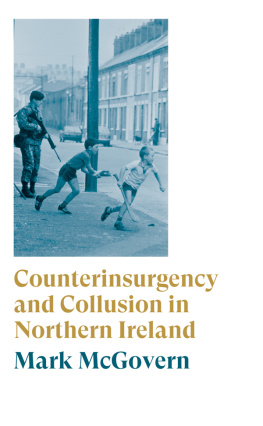UVF
The Endgame
Jim Cusack / Henry M c Donald

This edition published 2008
by Poolbeg Press Ltd.
123 Grange Hill, Baldoyle,
Dublin 13, Ireland
Email: poolbeg@poolbeg.com
Jim Cusack & Henry McDonald 2008, 2000, 1997
The moral right of the author has been asserted.
Copyright for typesetting, layout, design
Poolbeg Press Ltd.
1 3 5 7 9 10 8 6 4 2
A catalogue record for this book is available from the British Library.
ISBN 978-1-84223-326-9
All rights reserved. No part of this publication may be reproduced or transmitted in any form or by any means, electronic or mechanical, including photography, recording, or any information storage or retrieval system, without permission in writing from the publisher. The book is sold subject to the condition that it shall not, by way of trade or otherwise, be lent, resold or otherwise circulated without the publishers prior consent in any form of binding or cover other than that in which it is published and without a similar condition, including this condition, being imposed on the subsequent purchaser.
www.poolbeg.com
about the authors
Jim Cusack worked as a reporter for The Irish News, The Belfast Telegraph and as Northern Editor of The Irish Times during the height of loyalist violence in the 1970s and then worked in Dublin as the papers Security Correspondent. He is now a correspondent with the Sunday Independent .
Henry McDonald is Ireland Correspondent for both The Guardian and The Observer . He is the author of Irishbatt: The Irish Army in Lebanon and co-author with Jack Holland of INLA: Deadly Divisions and co-author with Jim Cusack of UDA: Inside the Heart of Loyalist Terror . He has also published a Troubles memoir, Colours: Ireland from Bombs to Boom as well as the first biography of Nobel Peace Prize-winner David Trimble.
PREFACE
In writing this book the authors were determined never to forget the innocent victims who have been killed or maimed over three decades of sectarian conflict. The UVF, like other paramilitary groups, has been responsible for a series of heinous crimes against ordinary people, which have left thousands of families devastated. When attempting to understand the reasons for the existence of organisations such as the UVF, we were always mindful of the pain and suffering inflicted by such groups.
Nevertheless, it is imperative that we examine the roots of UVF and loyalist violence. Until now there has been a dearth of literature related to all the loyalist terrorist movements in the North. This may be somewhat deliberate.
According to violent nationalist ideology, the loyalists dont really exist. They are portrayed merely as puppets of imperialism or death squads under the command and control of their British masters. This is the standard line of much of the left in Ireland and Britain as well as the Provisional IRAs traditional nationalist intellectual sympathisers in the Republic. To put their case bluntly, the Prods are really misguided Irishmen who, when Britain decides to withdraw from Ulster, will come to their senses and integrate into a United Ireland.
This of course is fantasy politics and poor history. The existence of the UVF, in both its original and modern forms, proves that there is unbroken indigenous resistance to Irish nationalist designs. The British presence in Ireland is the million Protestants who want to remain British. The UDA and UVF are merely the most violent manifestation of Unionist opposition to republican goals.
The UVF, an even older organisation than the IRA, is a product of the upheavals of the early twentieth century in Ireland, from the Home Rule crisis to the carnage of the Somme. In the twentieth century across Europe millions were slaughtered in the name of a nation, a class or a creed. In the new millennium, as all paramilitary forces in Ireland (barring the dissidents) are fading into the past, it is important to chart the journey of the modern UVF.
The purpose of this book is also to show the other side of the Irish question, to point up how trenchant, ruthless and brutal Protestant resistance towards violent nationalisms agenda has been in the past and could still be in the future.
Jim Cusack and Henry McDonald
December 2007
Matilda Gould lived with her son in a small rented house in Upper Charleville Street, in the heart of the Protestant Shankill area of west Belfast. She was a 77-year-old widow and had difficulty in walking, but still managed to look after her son, Samuel, an engineering worker. He paid her 4 a week to wash his clothes, do his cooking, and clean the small house they rented from Gerard McKeown, the Catholic proprietor of the off-licence next door.
The two premises were painted similarly and, to some people, the Goulds home was indistinguishable from the Catholic property next door. During the early spring nights of 1966 someone painted anti-Catholic slogans on the wall of Goulds home apparently under the impression it was part of McKeowns shop. The graffiti was traditional, crude sectarian fare proclaiming: Remember 1690. This house is owned by a Teague, and Popehead .
At 10.40 p.m. on May 7, 1966, Mrs Gould had retired to her bed set up in the ground floor front parlour because of her difficulty with the stairs and, it is presumed, was sleeping. Two men, one wearing a Dexter raincoat with its collar pulled up around his face, emerged from an entry, crossed Charleville Street and threw a Molotov cocktail into the room where she lay in her bed.
The men had been seen by several people, including a schoolboy, Samuel Andrews, who said the man whose coat collar was pulled up around his face and who threw the petrol bomb appeared to be drunk.
The attack brought neighbours running and two men broke down the Goulds front door to save whoever was inside. William McGuinness, from Upper Charleville Street, broke into the front room and turned over the bed but found no one. Outside, neighbours insisted that an elderly, crippled woman slept in the room and McGuinness and another man braved the flames a second time. They found Mrs Gould lying behind the door, still burning from the petrol which had been sprayed over her.
She was taken to the Royal Victoria Hospital and died there from her injuries seven weeks later. At her inquest, a barrister appearing for Mrs Goulds son, Samuel, observed: I think it is clear that this woman was murdered by members of an unlawful association. This old, crippled lady lived next door to an off-licence owned by a Roman Catholic and, unfortunately, a petrol bomb was thrown into her bedroom.
The barrister, William Doyle a Catholic who later became a judge and was himself killed by republican gunmen sought evidence from RUC Detective James McComb. McComb said he had been given the name of a suspect, a man with a prison record, but there was not sufficient evidence to charge him. He added: I think the act was part and parcel of the activities of an organisation known as the Ulster Volunteer Force.
Thus Matilda Gould, it can be said, was the first victim of the UVF, and although almost never recalled, the first of more than 3,000 victims of the ensuing decades of civil conflict in Northern Ireland.

